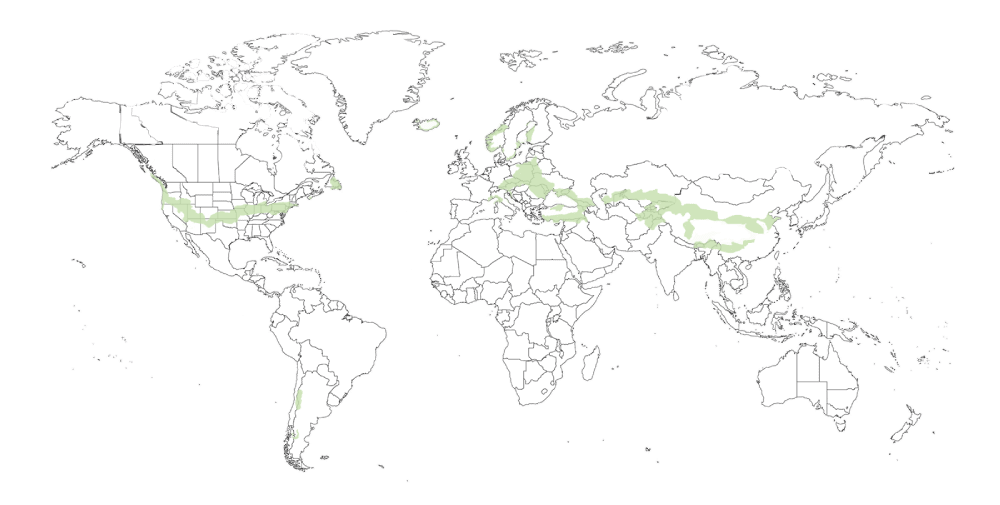

Butterfly Variegated Japanese Maple (Acer palmatum ‘Butterfly’)
Also known as: Acer palmatum 'Butterfly'.
Acer palmatum ‘Butterfly’ is a stunning variegated Japanese maple with bright yellow foliage that’s sure to draw attention. Its fine-textured leaves feature a network of veins in shades of green and white, resembling the pattern on a butterfly’s wings. In the summer, the foliage fades to a pale cream color, and in the autumn, the yellow-green edges flush pink. Its weeping form creates an enchanting, cascading display. This low-maintenance plant tolerates a variety of soils and is drought-tolerant once established, making it a wonderful choice for gardens of all sizes. Its stunning leaf display makes Butterfly Variegated Japanese Maple a must-have feature for the garden.
Plant care guide:
Watering
Butterfly Variegated Japanese Maples should be watered regularly and deeply once a week during the warmer months of the year. During cooler weather, these plants need to be watered only when the soil begins to dry, typically every 2-3 weeks. It is important to note that these plants do not like very wet soils, so it is important to water them deeply but not too much. If the soil becomes soggy, then reduce the amount of water given and the frequency of watering slightly.
Sunlight
Butterfly Variegated Japanese Maple (Acer palmatum 'Butterfly') should have 4 to 6 hours of direct sunlight each day and can tolerate some shade during the mid to late afternoon hours. This species fares best when the sun is strongest and most direct in the morning and early afternoon. The leaves of the Japanese Maple are vulnerable to burning and may burn easily if exposed to too much strong direct sunlight.
Pruning
Pruning a Butterfly Variegated Japanese Maple should be done in the beginning of spring before the plant begins to leaf out. The pruning should be light, with only the removal of any dead, diseased, or crossing branches, and the judicious reduction of some of the side branches to control height and spread. Its spread should not be reduced by more than a third each year and a more gradual reduction would be preferable, with continual light pruning every few years. A Japanese Maple pruned in this manner will gain an attractive, balanced form and allow it to reach its full potential.
Plant information:
- Family: Sapindaceae
- Type: Tree
- Height: ~3.66 meters
- Cycle: Perennial
- Growth Rate: Low
-
Anatomy:
- Branches: grey-silver
- Leaves: white
- Flower Color: Reddish-purple
- Maintenance: Low
- Care Level: Medium
-
Watering:
- Average
- Sunlight requirement: Full sun, part shade
- Pruning:
- March, April, May
- Propagation: Air Layering Propagation, Grafting Propagation, Cutting, Division, Seed Propagation
- Flowering Season: Spring
- Origin: Japan
- Seeds: No
- Drought Tolerant: No
- Salt Tolerant: No
- Thorny: No
- Invasive: No
- Tropical: No
- Indoor: No
- Flowers: Yes
- Cones: No
- Fruits: No
- Edible Fruit: No
- Leaf: Yes
- Edible Leaf: No
- Cuisine: No
- Medicinal: No
- Poisonous to Humans: No
- Poisonous to Pets: No

Content is based on public databases such as the KEW Plants of the World database, among others. Please double-check all information. "About Plants" does not take responsibility for any inaccuracies.
